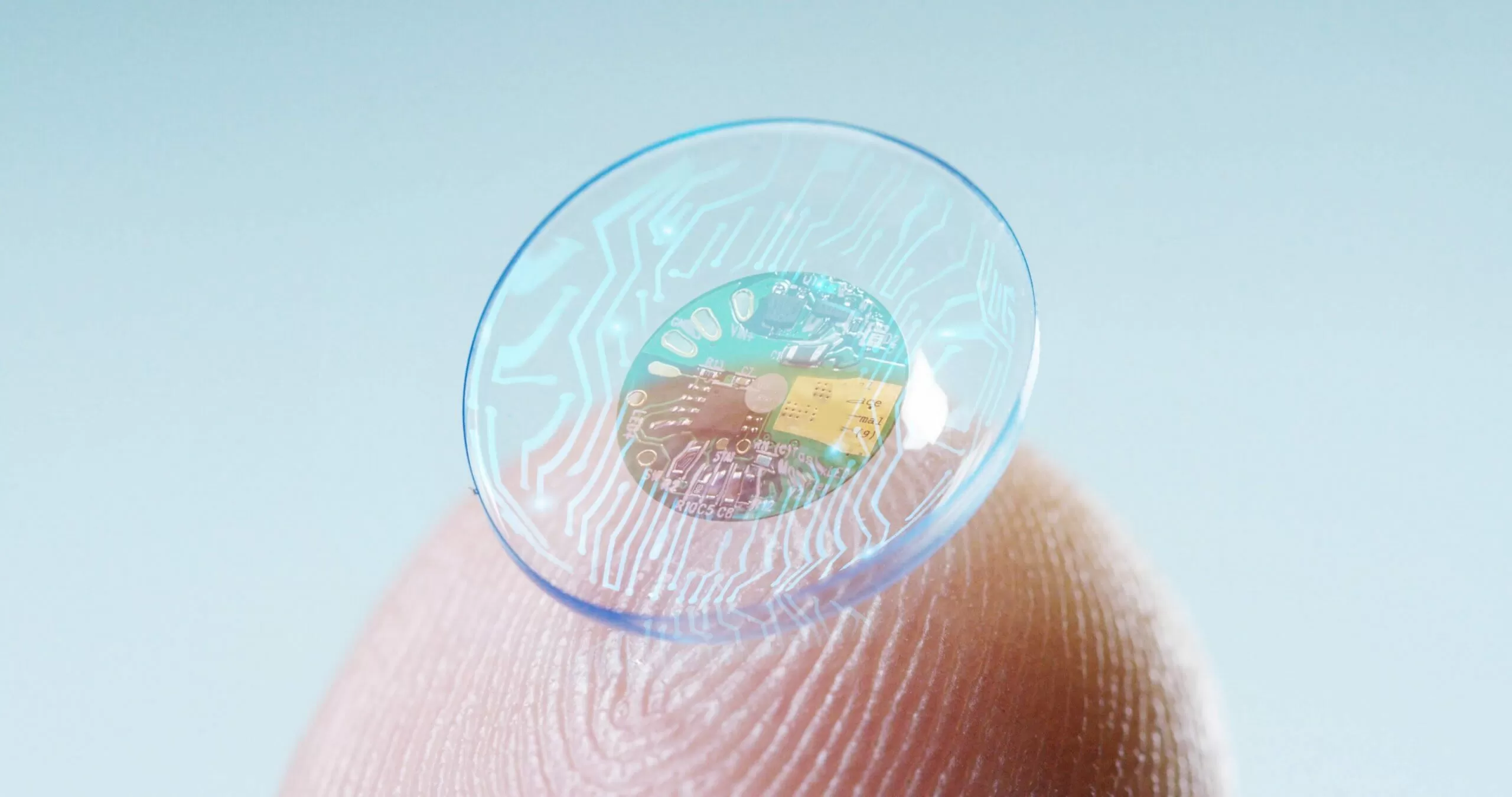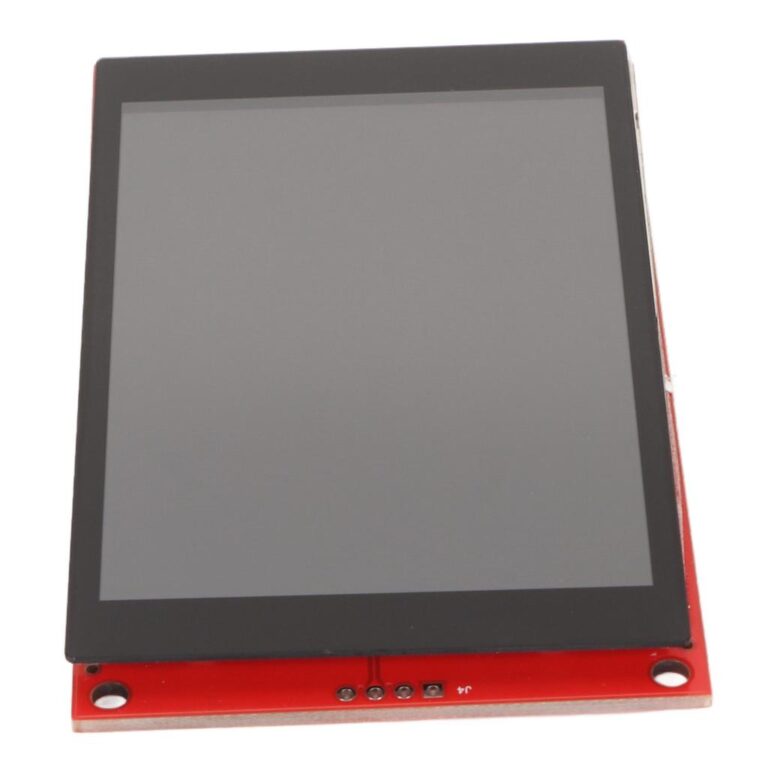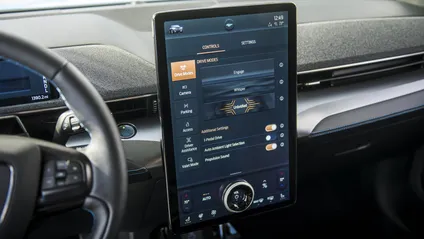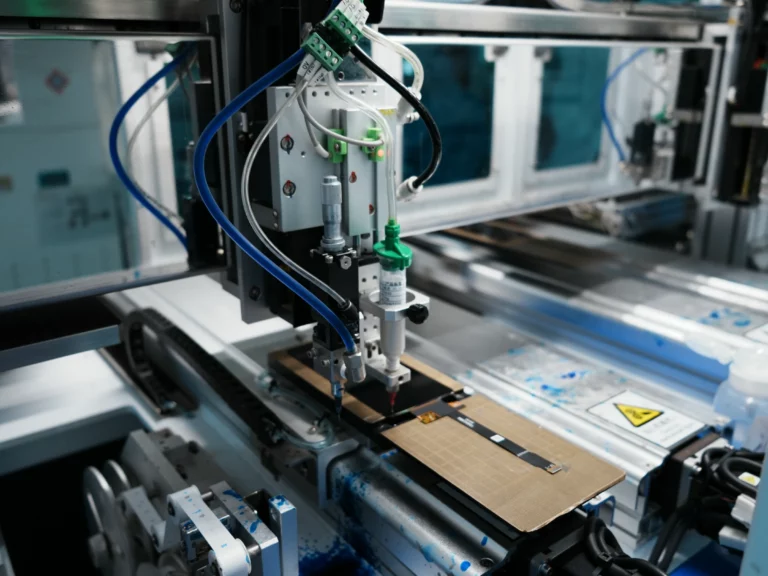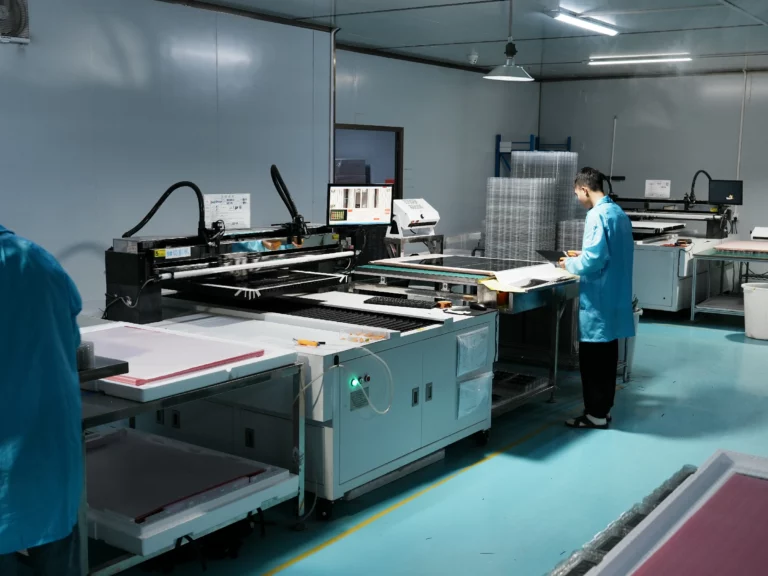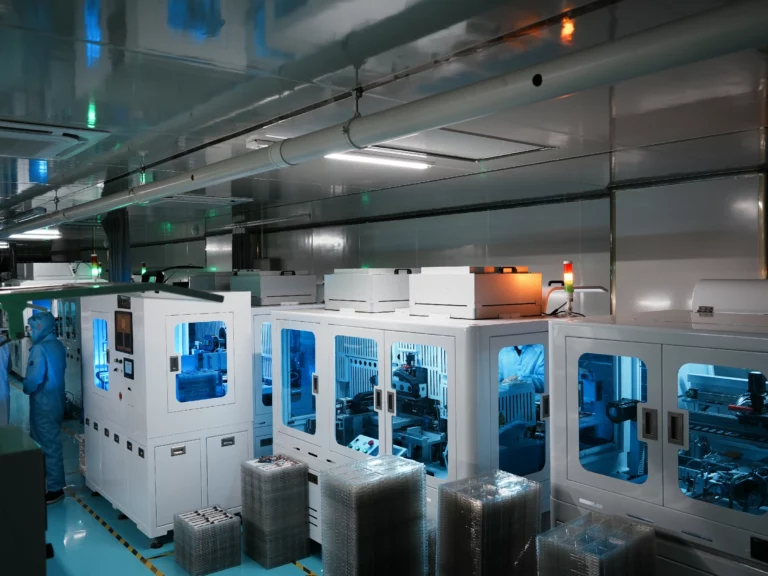The Dream Takes Shape: Early Concepts and Prototypes
Pioneering Proposals
The idea dates back to visionary inventors like Steve Mann, who sketched a bionic contact lens with an embedded display で 1999. These early ideas merged AR and miniature optics but remained conceptual due to technological constraints.
Google’s Smart Lens for Glucose Monitoring
In 2014, Google’s Verily unveiled a prototype sensory contact lens designed to measure glucose levels in tears with an embedded wireless chip and pinhole micro-sensor. Despite the innovation, the project was suspended in 2018, as tear glucose readings failed to correlate reliably with blood glucose.
Advanced R&D: CMST’s Electro-Optic Lens
Researchers led by De Smet in the 2010s developed thermoformed electro-optic layers inside a contact lens, including ultra-low power driver chips, micro-batteries, and hermetic protective coatings. This pioneering work demonstrated technical feasibility, albeit without full commercialization.
Breaking Ground: AR-Enabled Contact Lens Prototypes
Mojo Vision’s Ambitious Leap
Mojo Vision, founded in 2015, delivered perhaps the most advanced prototype: a microLED display と 14,000 pixels per inch (PPI) just 0.5 mm in diameter, combined with motion sensors, eye tracking, a custom ASIC, and a wireless communication system. A CEO demo in 2022 showcased on-eye AR overlays such as compasses and teleprompters.
However, by 2023 Mojo Vision pivoted away from smart lenses and laid off 75% of staff, retaining only its microLED technology.
XPANCEO and Multi-Functional Lenses
More recently, XPANCEO (2025) secured $250 million funding to develop smart contact lenses offering AR, night vision, optical zoom, tear-based biomarker sensors, intraocular pressure monitoring, and wireless power transfer. These lenses aim for medical niches before possible consumer rollout in the 2030s.
Other Academic and Prototype Advances
- South Korean researchers demonstrated a glucose-alert LED lens, with tear fluid sensors triggering visual cues.
- Retina-embedded displays using conductive thin films advanced low-tech prototypes.
- Military research prototypes explored AR overlay lenses for soldiers.
The Technological Tightrope: Engineering Challenges
Miniaturization and Fabrication
Integrating a display, sensors, power source, radio, and driver IC into a tiny biocompatible lens demands ultra-precise microfabrication—thermoforming liquid-crystal cells, encapsulating circuitry against tear fluid, and ensuring oxygen permeability.
Power and Energy Constraints
Mini-batteries or wireless power via NFC may power prototypes briefly; yet continuous power remains a challenge, complicated by heat and safety concerns.
Biocompatibility and Comfort
Long-term wear demands biocompatible materials that allow tear exchange. Overwear risks irritation, infection, or corneal damage.
Visual UX and Optical Design
Fitting meaningful AR content into a narrow ~50° field of view while avoiding optic fatigue requires collimated retinas, minimal interface clutter, gaze-based input, and dynamic brightness compensation.
Health, Safety & Privacy
Soft contact lens misuse can cause serious health issues. Electronic implants that continuously record visual data raise huge privacy and surveillance risks.
Regulatory Barriers
As medical devices, smart lenses need FDA approval—requiring extensive clinical trials and long-term safety data.
Market Viability & Business Models
High manufacturing cost, unclear consumer demand, and speculative revenue models make business scaling difficult. Mojo Vision’s pivot and Verily’s discontinued project illustrate these economic limits.
The Market Retreat: Why the Concept Lost Momentum
We’ve seen pioneering projects reach working prototypes—but none have reached market viability, for several intertwined reasons:
- Technical Overreach – multiple engineering hurdles remain unsolved.
- High Costs – manufacturing is too expensive.
- Funding Constraints – R&D investors pulled back.
- Regulatory Complexity – lengthy approvals deter momentum.
- Consumer Reluctance – hesitation about putting electronics on the eye.
- Privacy & Ethics – invisible surveillance concerns.
Lessons Learned: Why the Market Turned Away
- 実現可能性 ≠ 需要 プロトタイプが存在したからといって、主流の消費者がそれらを受け入れることを意味するわけではなかった。
- 安全第一 人の目は繊細である。安全な大量普及には、ほぼ完璧な生体適合性が要求される。
- より優れた代替手段 ARグラスとスマートフォンの方が依然として実現性が高い。
- 特化した応用分野が勝つ 眼内圧センサーなどの医療用レンズは、より急速に進歩している。
今後に向けて:この構想は再び浮上するのか?
広範に埋め込まれた表示機能付きレンズは商業化には至らなかったが、現在進行中の趨勢により、そのコンセプトの一部が復活する可能性がある:
- 医療応用 – XPANCEOのバイオマーカーおよび緑内障モニタリングレンズ。
- ハイブリッド設計 – 受動型AR光学要素を備えた矯正レンズ。
- 目を必要としないウェアラブル – 現実的な解決策としてのARグラス。
- コンポーネント技術 – 他のデバイスに利益をもたらすMojo VisionのmicroLED技術。
- 倫理的枠組み – 将来の普及には規制と信頼が必要。
結論
コンタクトレンズへの 埋め込み型LCDディスプレイの道のりは、 微小電子工学、光学、人間と機械のインターフェースにおけるブレークスルーを要求する、非凡な技術的夢であった。
Google、Mojo Vision、XPANCEOなどの先駆者らが顕著な進歩を遂げたにもかかわらず、技術的、健康的、経済的、倫理的という複数の障壁が、結局のところ主流の普及を阻んだ。
技術、特に医療および支援分野においてさらに進化を続ける中で、ハイブリッドあるいは部分的な実装は依然として成功する可能性がある。しかし現時点では、埋め込み型ディスプレイを備えたスマートコンタクトレンズは、未来のビジョンのままであり…まだ現実とはなっていない。


